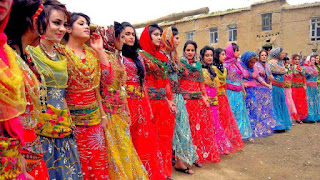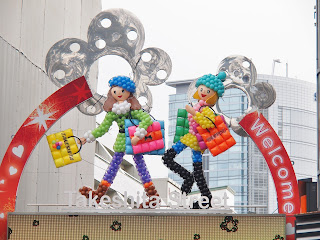It doesn't come as a shock to know that South America is comprised of many countries but what may interest some is just how much history is encapsulated in Chile in particular.
Chile is alive or 'hot hot hot' as the advertisement says. To understand her past is to understand her future. Conquered by the Spanish conquistadors in 1540 and it was not until 1818 that Chile gained her independance. Since then there have been upheavals in leadership that have resulted in the Chile we see today. One of the most well know Presidents is Pinochet who assumed rule following the coup d'e'tat in September 1973. He overthrew the democratically elected Unidad Popular government of Salvador Allende ending civilian rule. But time moves forward and today Sebastian Pinera currently resides over a very modern Chile.
But enough of history, let's get to the more palatable side of Chilli - wine. Producing world class wines as the 9th largest producer in the world has been an exciting time for the country. The region stretches on the West coast with Casablanca - yes this is the original- being noted for many boutique establishments. Bodegas Re is a perfect place to sample true boutique style wines and visit their Balsameria where they are perfecting incredible vinegar and syrup varieties.
The Carmeneire' grape is now producing some of the finest reds while Pinot Noir is making its mark in the cellars of Santiago and beyond. The Leyda and Limari' valleys alongside Casablanca are well known for their exquisite Sauvignon Blanc while Malbeck lovers are not forgotten.
Heading northwest of Santiago will position you perfectly in the coastal port of Valparaiso. What can only be described as artistic and cultural, the UNESCO listed ( 2003) city is well known for street art and the Nobel Prize winner ( 1971) Pablo Neruda who is reknowned for his love poems alongside his political career. The Chillean rail begins in Valparaiso and it is home to the Chillean Navy. I don't think a few days in this beautiful city would go astray. Try out their cuisine at one of the many restaurants.
An odd addition to Chilli is that it boasts the largest swimming pool in the world. Built at a cost of 1 billion dollars it opened in 2006 after taking 5 years to construct. Algarrobo is situated on the Pacific coast in central Chille andcertainly is a great place for water lovers. Chile also has the longest coastline ( 6500 klms) in the world. Just north of El Canelillo is the Isolte Pajaros Ninos a small rocky promontory where you will find the migratory Humboldt penguins. The Seno Otway Colony in Punta Arenas is home to around 150,000 strong Magellanic penguins during the months of November to January. Their powerful agility entering and existing the water is just incredible to watch - as it is when they waddle too fast and then plank as they fall flat.
No story about Chile would be complete without a mention of RAPA NUI, the world famous Easter Island. The Moai- large stone heads resting on ahus ( pedestals) gazing to the sea - are wrapped in legend as nearly 900 statues created during the 13th to 16th centuries have stood the test of time on this volcanic island.
While there is so much more to Chile like the phenominal Tierre del Fuego shared by both Chile and Argentina with snowy mountains glaciers and tundra, the Atacama Desert in complete contrast is where I will end my story. The driest desert in the world stretching from the Andes Mountains to the Pacific for 1,000 kilometres is without doubt, the provider of some of the most exquisite sunrises and sunsets imaginable. But far from being and arid desolate wilderness, Atacama is alive with llamas, Vicunas -who produce the most expensive wool - and Guanaco (wanaku) the only wild species of llama -and the cutest bunny like creature - the Vizcacha. Of course there are the usual lizards that languish on rocks watching the tourists as if they were aliens. Visit Rainbow valley which reminds me of a moonscape and the petroglyphs of Yerbas Buenas mark the tide of time with windswept rock faces hovering as if protecting a long ago secret. The Tatio geysers and salt lakes ( much smaller than the Uyuni in Bolivia) cannot be bypassed.
So do you sleep in the desert? Of course you do - in one of the most stunningly designed resorts such as Alto Atacama, the Explorer and Tierra Atacama. There are so many options that you are spoilt for choice. Our hosts for this expedition the Alto Atacama provided us with the ultimate experience and I cannot acknowledge them enough. Close to the township of San Pedro de Atacama the resort has thought of your every need. From trilogy massages to excursions to the unknown - well they will be at first - and the exposure to the stars through their astronomy programme, you will have no problem in filling your time. Feeling like you are close to heaven as you recline on your own couch, wrapped in a blanket, while listening to the resident expert explain just how close you are to the constellations is a highlight, you could almost reach up and touch the stars.
The Alma Project observatory is located 50 kilometres from San Pedro de Atacama and is open every Saturday and Sunday morning to the public-free of charge - but you must register well in advance. The construction of the Alma Observatory in Chile has contributed immensley to the development of astronomy in the country. For more information go to www.almaobservatory.org/en/about-alma-at-first-glance/
So as the susets over the Andes Mountains I need to acknowledge the company that made this journey possible CHIMU ADVENTURES AUSTRALIA. Without your guidance and planning this adventure would have only been a dream.














































